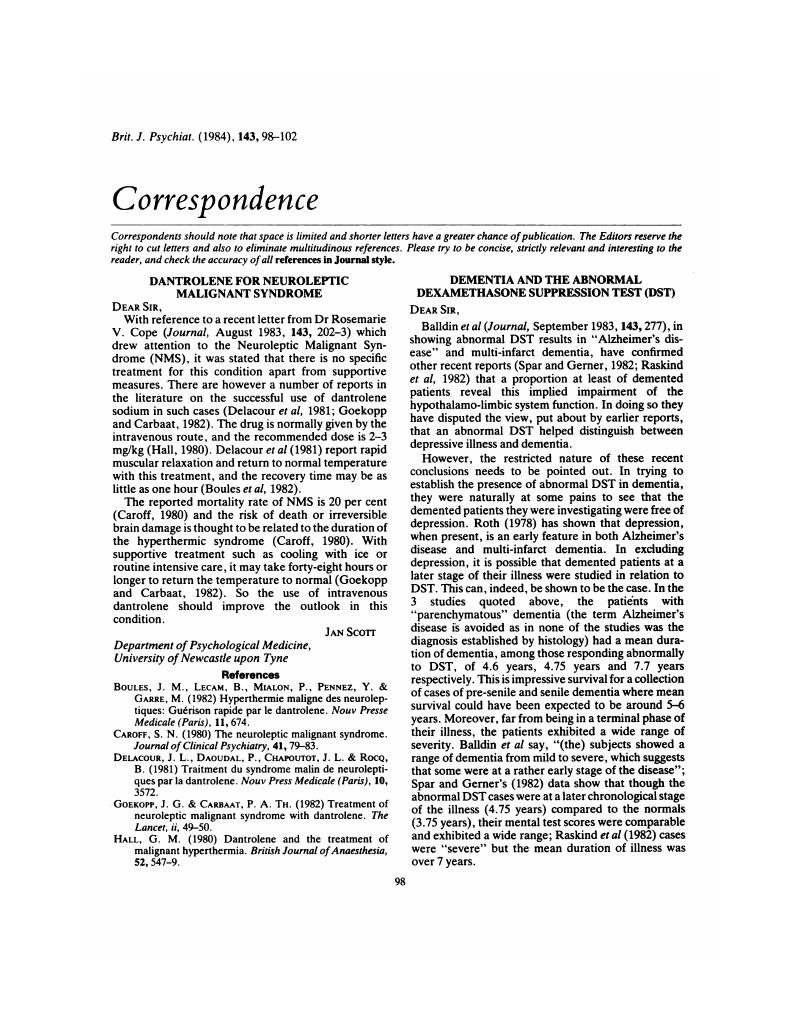Crossref Citations
This article has been cited by the following publications. This list is generated based on data provided by Crossref.
Mahendra, B.
1984.
Dexamethasone Suppression Test (DST) in Dementia.
British Journal of Psychiatry,
Vol. 145,
Issue. 6,
p.
669.
1985.
ECT-induced hyperactive delirium and brain laterality.
American Journal of Psychiatry,
Vol. 142,
Issue. 4,
p.
521.
MOFFATT, JEANNIE
1985.
Dr. Moffatt Replies.
American Journal of Psychiatry,
Vol. 142,
Issue. 4,
p.
521.
Mahendra, B.
1985.
Depression and dementia: the multi-faceted relationship.
Psychological Medicine,
Vol. 15,
Issue. 2,
p.
227.
DANIEL, WALTER F.
1985.
ECT-Induced Hyperactive Delirium and Brain Laterality.
American Journal of Psychiatry,
Vol. 142,
Issue. 4,
p.
521-a.
Charles, Gerard A.
Lefevre, Andre
Mirel, Jean
and
Rush, A.John
1986.
Suppression of cortisol following dexamethasone in demented patients.
Psychiatry Research,
Vol. 17,
Issue. 3,
p.
173.
M, A. El Sobky
Shazly, El
Darwish, A. K.
Davies, T.
Griffin, K.
and
Keshaven, M. S.
1986.
Anterior pituitary response to thyrotrophin releasing hormone in senile dementia (Alzheimer type) and elderly normals.
Acta Psychiatrica Scandinavica,
Vol. 74,
Issue. 1,
p.
13.
Charles, G
Panzer, MJ
Machowski, R
Lefevre, A
and
Mirel, J
1991.
Effects of piracetam on the dexamethasone suppression test in Alzheimer's and multi-infarct dementias.
European Psychiatry,
Vol. 6,
Issue. 4,
p.
195.




eLetters
No eLetters have been published for this article.